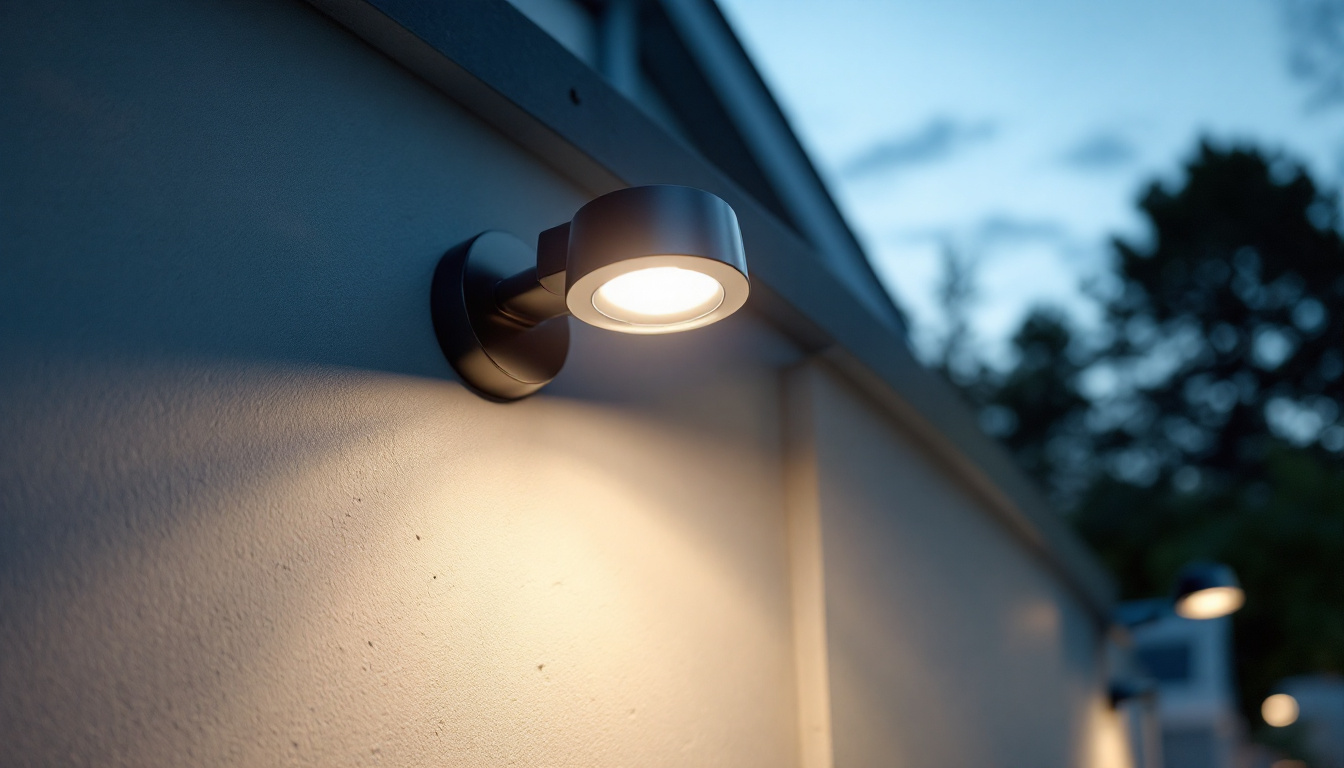
In the ever-evolving landscape of commercial and residential lighting, surface mount flat panel LEDs have emerged as a popular choice among lighting contractors. Their sleek design, energy efficiency, and versatility make them an appealing option for various applications. However, with numerous alternatives available, it’s essential for lighting contractors to weigh the pros and cons of flat panel LEDs against other lighting solutions. This article delves into the characteristics, benefits, and drawbacks of surface mount flat panel LEDs compared to their alternatives, helping contractors make informed decisions for their projects.
Surface mount flat panel LEDs are thin, rectangular light fixtures designed to be mounted directly onto ceilings or walls. Unlike traditional recessed lighting, which requires a cutout in the ceiling, flat panels offer a streamlined installation process. They are available in various sizes, color temperatures, and lumen outputs, catering to different lighting needs.
One of the standout features of flat panel LEDs is their slim profile. This design allows for a modern aesthetic that fits seamlessly into contemporary spaces. Additionally, they provide uniform light distribution, reducing shadows and creating a pleasant ambiance. Many models also come with dimming capabilities, allowing for customizable lighting levels. Some advanced versions even include smart technology, enabling users to control brightness and color temperature through mobile apps or voice-activated devices, enhancing convenience and functionality.
Flat panel LEDs are known for their energy efficiency, consuming significantly less power than traditional incandescent or fluorescent lights. This efficiency translates to lower energy bills for end-users, making them an attractive option for both residential and commercial settings. Furthermore, flat panel LEDs boast a long lifespan, often exceeding 50,000 hours, which means reduced maintenance costs for contractors and their clients. The durability of these fixtures also means they are less prone to breakage, which is particularly beneficial in high-traffic areas where lighting fixtures may be subject to wear and tear.
These lighting fixtures are versatile and suitable for various applications, including offices, schools, hospitals, and retail spaces. Their ability to blend into different environments makes them a favorite among designers and contractors alike. Moreover, flat panel LEDs can be used in both new constructions and retrofitting projects, adding to their appeal. In educational settings, for example, their flicker-free operation can help reduce eye strain for students, creating a more conducive learning environment. In retail spaces, the ability to adjust color temperatures can enhance product displays, making them more appealing to customers and improving overall shopping experiences.
In addition to their energy-saving benefits, flat panel LEDs contribute positively to environmental sustainability. By using less energy, they help reduce greenhouse gas emissions associated with electricity production. Furthermore, unlike traditional fluorescent lights, flat panel LEDs do not contain harmful substances like mercury, making them safer for disposal and less hazardous to the environment. Many manufacturers are also focusing on producing these fixtures with recyclable materials, further minimizing their ecological footprint. As more businesses and homeowners prioritize eco-friendly solutions, the demand for flat panel LEDs continues to grow, reflecting a broader shift towards sustainable living practices.
While surface mount flat panel LEDs offer numerous advantages, several alternatives are available in the market. Understanding these options is crucial for lighting contractors aiming to provide the best solutions for their clients.
Recessed lighting, often referred to as can lights or downlights, involves fixtures that are installed into the ceiling, creating a clean and unobtrusive look. This type of lighting is popular in residential settings and can be used to highlight specific areas or provide general illumination.
One of the main advantages of recessed lighting is its ability to create a sense of depth in a space. However, installation can be more labor-intensive, requiring cutting into ceilings and potentially more electrical work. Additionally, recessed lights may not provide the same level of uniform light distribution as flat panel LEDs, leading to shadows in certain areas.
Troffer lights are another alternative commonly found in commercial settings, particularly in drop ceilings. These fixtures typically come in 2×2 or 2×4 sizes and are designed to fit into standard ceiling grids. Troffer lights are often used in offices and educational institutions due to their efficiency and ease of installation.
While troffer lights offer good light output and can be energy-efficient, they may lack the sleek design of flat panel LEDs. Additionally, their bulkier appearance can detract from the aesthetic appeal of modern interiors. Contractors should consider the specific needs of their projects when choosing between troffer lights and flat panel LEDs.
Fluorescent lighting has been a staple in commercial and industrial settings for decades. These fixtures are known for their bright, white light and energy efficiency compared to incandescent bulbs. However, with the rise of LED technology, fluorescent lights are becoming less common.
While fluorescent lighting can be cost-effective upfront, it often requires more frequent replacements and maintenance. Additionally, fluorescent bulbs contain hazardous materials, such as mercury, which can pose disposal challenges. For contractors, the long-term benefits of flat panel LEDs, including lower energy costs and minimal maintenance, often outweigh the initial savings of fluorescent options.
When evaluating lighting options, surface mount flat panel LEDs present several compelling advantages that make them a preferred choice for many contractors and clients.
While the initial investment in flat panel LEDs may be higher than traditional lighting options, their long lifespan and energy efficiency lead to significant cost savings over time. Reduced energy consumption translates to lower utility bills, and the longevity of these fixtures minimizes replacement and maintenance costs.
The sleek and modern design of flat panel LEDs enhances the visual appeal of any space. Their ability to blend seamlessly into ceilings or walls makes them ideal for contemporary designs, providing a clean and uncluttered look. This aesthetic advantage can be a selling point for contractors looking to impress clients with stylish lighting solutions.
Flat panel LEDs are designed to provide high-quality, uniform light distribution. This characteristic is essential in environments where consistent lighting is crucial, such as offices and retail spaces. The absence of flickering and the availability of various color temperatures allow contractors to tailor lighting solutions to meet specific client needs.
Despite their many benefits, there are challenges and considerations that lighting contractors should keep in mind when opting for surface mount flat panel LEDs.
While flat panel LEDs are generally easier to install than recessed fixtures, they still require careful planning and installation to ensure optimal performance. Contractors must consider the mounting surface, electrical connections, and the overall layout of the lighting design. Proper installation is crucial to avoid issues such as flickering or inadequate light output.
For projects involving retrofitting, compatibility with existing lighting systems is a significant factor. Contractors must assess whether flat panel LEDs can be integrated with current electrical setups or if additional modifications are necessary. This evaluation can impact project timelines and budgets, making it essential to plan accordingly.
The upfront costs of flat panel LEDs can be a deterrent for some clients, especially when compared to traditional lighting options. Contractors should be prepared to educate clients on the long-term savings associated with energy efficiency and reduced maintenance. Providing a clear comparison of total cost of ownership can help clients see the value in investing in flat panel technology.
Choosing the right lighting solution for a project involves careful consideration of various factors, including aesthetics, functionality, and budget. Lighting contractors play a crucial role in guiding clients through this decision-making process.
Understanding the specific needs and preferences of clients is paramount. Contractors should engage in discussions to determine the desired ambiance, functionality, and style of the space. This information will help in recommending the most suitable lighting solution, whether it be flat panel LEDs, recessed lighting, or another alternative.
Each space presents unique lighting challenges and opportunities. Contractors should assess the layout, ceiling height, and purpose of the area to determine the most effective lighting strategy. For example, flat panel LEDs may be ideal for spaces with low ceilings where recessed lighting is not feasible.
The lighting industry is continually evolving, with advancements in technology and design. Contractors should stay informed about emerging trends, such as smart lighting solutions and energy-efficient innovations. By keeping abreast of these developments, contractors can offer clients cutting-edge options that enhance their projects.
Surface mount flat panel LEDs present a compelling option for lighting contractors seeking modern, energy-efficient lighting solutions. While alternatives like recessed lighting, troffer lights, and fluorescent fixtures have their merits, the advantages of flat panel LEDs—such as cost-effectiveness, aesthetic appeal, and improved light quality—often make them the preferred choice.
Ultimately, the decision should be based on a thorough assessment of client needs, space requirements, and long-term benefits. By understanding the unique characteristics of flat panel LEDs and their alternatives, lighting contractors can make informed recommendations that enhance their projects and satisfy their clients.
Ready to elevate your lighting projects with the sleek appeal and energy efficiency of surface mount flat panel LEDs? Look no further than LumenWholesale for a vast selection of spec-grade lighting solutions at unbeatable wholesale prices. Say goodbye to middleman markups and hello to premium quality without the premium cost. With our commitment to industry standards and hassle-free bulk buying, you can trust that you’re getting the best value for your investment. Plus, with free shipping on all orders, the price you see is the price you pay—no hidden fees, no compromises. Make the strategic choice for your lighting needs and experience wholesale lighting at the best value today with LumenWholesale.

Discover essential tips and common pitfalls for lighting contractors working with security LED lights.

Discover the ultimate guide to LED fluorescent light fixtures with our essential checklist tailored for lighting professionals.

Discover the essential components and expert tips for creating the perfect exit kit for lighting.

Discover the common pitfalls lighting contractors face when selecting light switch types.